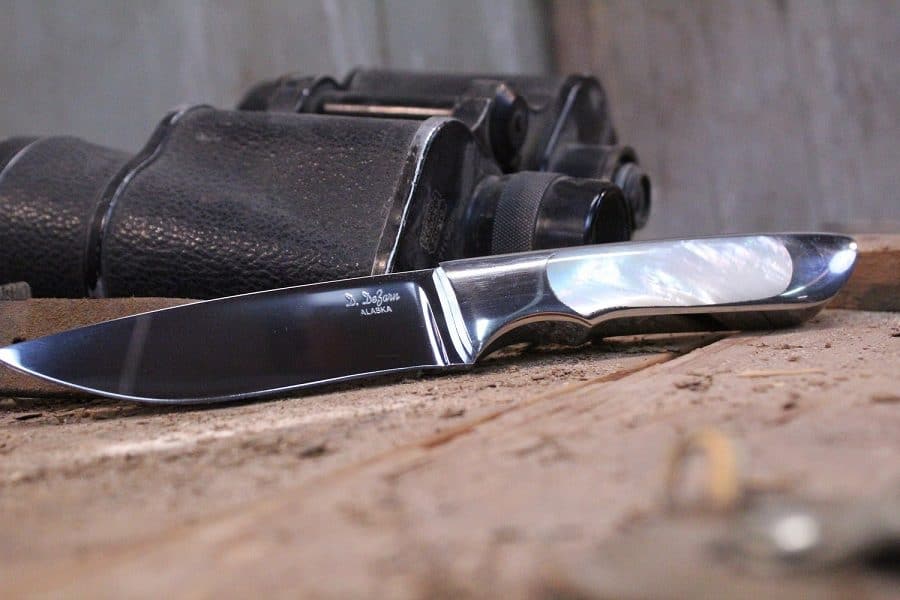The search for the best knife for regular kitchen use has a lot to do with the knife steel used in construction.
Choosing the best material for your kitchen or hunting knife gives you confidence that the blade will perform according to expectations.
There’s a sense of satisfaction when you know that your knife can handle anything thrown at it.
What properties should you look for in a knife?
This article compares two types of steel knife blades. First, we compare the S30V vs.VG10blades so you can understand their similarities and differences. Then, after the comparison, you get to decide which of the two is best for a knife blade.
Properties Of a Good Knife Steel
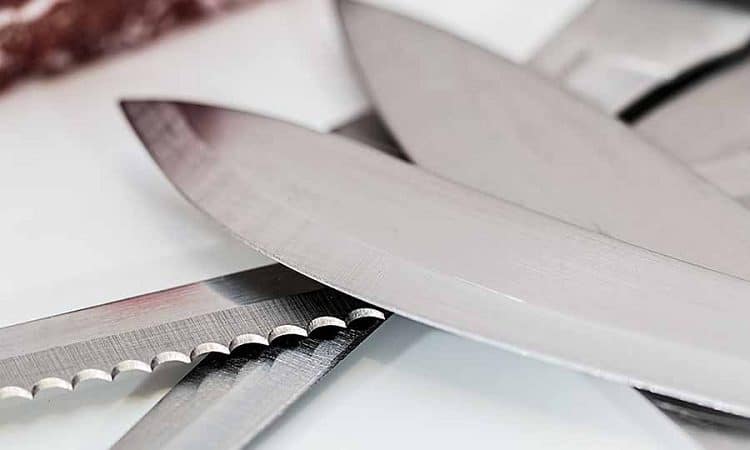
Before we dig deeper into comparing S30V vs.VG10steel knife blades, let’s dissect some of the properties to look for in a good steel blade.
Hardness
It goes without saying that a good knife blade must be robust enough to withstand the purpose of use.
Whether you are cutting meat, filleting, or skinning, the edge should be tough enough to withstand the conditions for which it is designed.
Toughness
The worst experience you can have with a knife is that it chips when using it. You cannot repair blade chips easily, meaning that the knife goes to waste.
You must eventually throw it away. A good knife blade should be tough enough to resist breaking or chipping when using them according to manufacturer instructions.
Corrosion-resistant
Corrosion ruins a knife. It becomes hard to use the knife in the kitchen, camping, or hunting if it quickly corrodes when exposed to humidity, salt, or moisture.
Therefore, a good knife blade should be corrosion resistant whether you use it indoors or outdoors.
Edge retention
Edge retention is another vital knife property for a regular knife user. This quality determines the ability of the knife to retain its sharpness over a given period.
You don’t want a knife that you need to sharpen after using it two or three times. A good knife is resistant to wear and tear and will still retain a keen blade with regular use.
Understand that it’s challenging to find a knife blade with all these properties.
Extra hard knife blades are prone to damage those with exceptional edge retention may not be robust enough to withstand harsh conditions.
Therefore, a good tradeoff is often necessary to choose a knife that is fit for its purpose.
What Is S30V Steel?
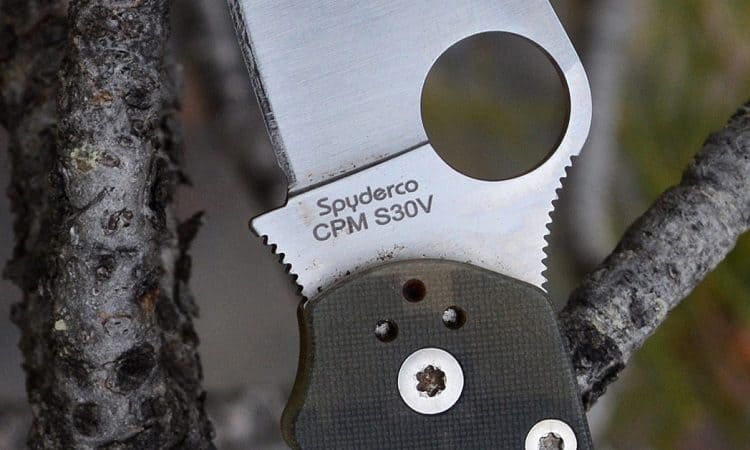
S30V steel is technically known as CPM (Crucible Particle Metallurgy), and Crucible industries produce S30V steel.
The S30V steel is the definition of toughness and reliability as far as knife steels are concerned. It comes as high-end stainless steel that is martensitic(hardened) and undergoes sintering for corrosion resistance.
The original design of the S30V was created by a globally renowned knife smith Chris Reeve and was initially used for making high-end pocketknives.
This martensitic stainless steel is rich in vanadium, carbon, and molybdenum.
A combination of all these elements provides CPM S30V with excellent anti-corrosion, edge retention, and wear-resistant properties.
S30V’s combination of chemical and mechanical properties makes it a unique type of steel for knives. A look into these properties provides a clear idea about this type of steel and its capabilities.
Chemical composition
The toughness and anti-corrosion properties of S30V are attributable to its chemical composition.
Let’s have a detailed look at the chemical composition of this type of steel to gain a better understanding of the quality of knife blades made from this steel:
- It contains 1.45% of Carbon: This addition helps to improve the steel’s hardness and anti-corrosion properties. However, this composition also reduces its overall strength.
- Chromium (14%): The S30V has excellent edge retention thanks to the addition of chromium.
- Molybdenum (2%): It enhances the overall workability, corrosion resistance, and strength of CPM’sS30V steel.
- Nitrogen (0.2%) for better edge retention and strength.
- Manganese (0.5%) for increased hardness.
- Vanadium (4%) to increase toughening and wear resistance.
- Tungsten (0.4%) to enhance hardness and reduce wear.
- Sulfur (0.03) for improvements in strength and machinability.
All the chemical properties of the S30Vimprove its heat treatment response. As a result, this steel can be hardened at just under 20000F with an austenitizing temperature of 19000F.
With the presence of Mo-2%, the hardenability of S30V increases. This issue also means that quenching for the S30V can be done at slower air rates.
Cold treatments achieve a 64 Rc, which is the recommended level for many knives.
What Is VG10 Steel?
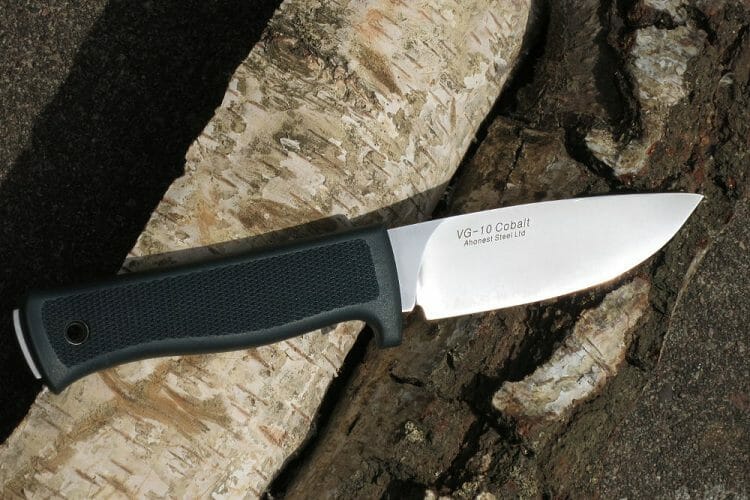
Knives made of VG10 steel are still among my favorite foldable blades. So let’s discuss the VG10 steel. The VG10 traces its origin from Japan–Takefu Special Steel manufactured it in Japan.
This steel has good quality such that the ‘G’ in VG10 represents the “gold standard.” Consequently, it has gained much popularity in Japan, being the most used stainless steel knife for cutlery.
VG10 steel is a high-carbon and Vanadium stainless steel with a lot of popularity in tactical use, hunting, and pocketknives.
This premium-grade steel allows easier machinability of knives to any design and shape.
Enough of that. Let’s dig deeper to understand the chemical compositions of the knife.
Chemical properties
- Carbon-95 (1.05%): Specific use of the C-95 due to its ability to increase hardness and corrosion resistance.
- Vanadium-10 (0.3%) enhances hardening and resistance to wear.
- Molybdenum-90 (1.2%) to improve the strength and inuring of the VG10 steel.
- Phosphorus 0.03%: It increases overall strength and durability.
- Manganese 0.5% to increase the brittleness and hardness.
- Cobalt-1.3 1.5%, which enhances resistance to external stress. It boosts the knife’s effect on other components.
- Chromium 15.5% gives it high tensile strength and increases edge retention properties and corrosion resistance.
VG10 has a tremendous tradeoff balance of different properties. It has high levels of carbon and chromium and is, therefore, categorized as stainless steel.
The various properties have given the VG10 excellent corrosion resistance and hardness. However, this steel composition has more significant effects on all other steel materials due to cobalt’s presence.
Even though the VG10 does not excel when subjected to other steel performance traits, the excellent balance of its properties continues to boost its popularity as a first choice in making knife blades.
Whether you are using a pocketknife, hunting knife, or a VG10 knife blade in the kitchen knife guarantees efficiency.
Comparison
Before settling on one steel type for your next blade project, let’s analyze the two knife steels.
Comparing the similarities and differences between the two gives a distinct picture of the best steel type for a knife.
This comparison is based on the properties mentioned earlier: hardness, toughness, corrosion resistance, edge retention, machinability, sharpening, and affordability.
Similarities

The two types of steel, S30V vs. VG10 have significant similarities based on the overall steel properties. These similarities are based on detailed research and analysis of their chemical composition and machining.
Here are some of the similarities we’ve identified:
Hardness
RegardingS30V vs. VG10, both have a hardness ranging between 58 to 60 HRC. These hardness levels reflect the measurement of the heat treatment process for each steel.
Some treatment and quenching techniques used may bring out different levels of hardness for both. The quenching method used when machining determines the level of hardness for individual steels.
However, on a balanced scale, both have elevated hardness qualities.
Corrosion resistance
Both knife steels have anti-corrosion properties when exposed to humidity, salt, or moisture. The presence of high levels of chromium provides excellent corrosion resistance.
However, this does not mean that they are immune to corrosion. Exercising proper care for your knife also helps to reduce corrosion.
Simple practices such as cleaning and wiping it dry after use help protect your knife from corrosion and rusting.
Wear resistance
The presence of high levels of vanadium and chromium in both the S30V vs. VG10 gives knife blades excellent wear resistance. The carbon volumes in both knife steels improve their wear resistance.
They both have a proper balance of hardness and wear resistance, which increases their durability.
Edge retention
As mentioned earlier, the S30V vs. VG10 has hardening levels of around 58-60 HRC. The hardness levels mean that they also have excellent edge retention.
Hardness in steel is proportional to edge retention. Therefore, knife blades made of any of these steels will serve their purpose without quickly losing their sharpness.
Differences

Although the two steel types in S30V vs. VG10 provide excellent qualities for a knife blade, there are identifiable differences.
Having learned the chemical composition and individual properties of each steel blade, here are some critical differences between the two steel types.
Toughness
There is a clear difference between the toughness of the S30V vs. VG10.
Even though there is a tradeoff of toughness for the sake of hardness and corrosion resistance for both, the S30V has superior toughness compared to VG10.
The differences are not particularly significant but are discernible. Subjecting both knife steels to similar conditions to test toughness shows that the S30V is slightly tougher than VG10.
Machinability
While both are machinable, the S30V shows superior properties of machinability compared to VG10. The presence of 2% Mo in S30Vis 0.8% higher than in VG10, making the S30V easier to grind.
S30V also has more strength for easier machining, making it better in this line.
Sharpening
Despite both steels having excellent edge retention, they both require sharpening at one point. The sharpening experience for the VG10 is easy compared to the S30V.
The hardness levels of S30V and its strength make it a little difficult to sharpen. While you can use a simple sharpening stone for the VG10, the same may not provide efficient sharpening for the S30V.
Affordability
On a level scale, the S30V is high-end stainless steel. Thus, it’s more expensive compared to the VG10.
Although both are used to make high-end knives, their chemical composition and properties create a difference in terms of cost.
Differences between the properties of the S30V vs. VG10 make these individual steels unique. These differences bring out the particular characteristics of each steel blade for specific use.
Some knives are better off with the S30V and vice versa for the case of VG10 steel.
Which One Should I Use?
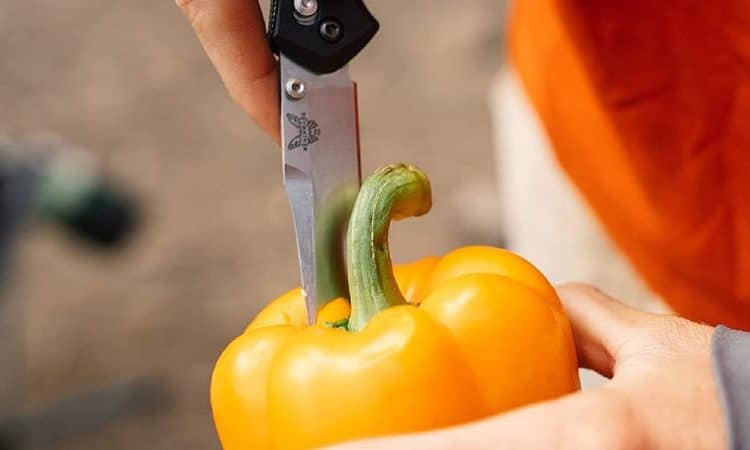
There is no uncomplicated response to this question, but it all trickles down to the intended purpose of your blade.
Both these knife steels have excellent properties for making a durable, reliable, and efficient knife blade.
Before answering this question, there are essential factors to consider. For one, do you want a general-purpose knife or one for a specific use? Secondly, are you on a budget or not?
The purpose of your knife is essential because it determines the knife steel to buy. For example, suppose you want something tough to use when outdoors.
The S30V works better. It has good retention and machinability.
For general and cutlery knives, go for the VG10 knife steel. Its properties, such as edge retention and sharpness, make it suitable for this purpose.
In addition, this knife blade has a good balance of performance that makes it reliable and efficient, and the presence of molybdenum increases its machinability.
As a result, you can quickly grind it without damaging the whole blade.
In terms of budget, the VG10 takes the day. It is affordable compared to the S30V knife steel while still delivering a good balance in its properties.
Remember that having all the properties in single knife steel is practically impossible. So you have to trade off some features for others.
For instance, you can choose to ignore the cost of S30V and use it for its excellent properties.
In my opinion, I would go for the VG10 knife steel. Good performance and excellent properties are in an adequate balance in this steel, making for a robust knife blade.
Moreover, its properties, such as sharpening, hardness, and edge retention, are good enough for hunting, tactical, or kitchen. Besides, it’s less expensive!
Conclusion
Good knife steel gives you peace of mind. Always look at the properties of knife steel before settling for a specific knife blade.
Creating a good balance between variables such as the properties of the knife steel will determine the blade’s performance and use over time.
Remember to identify the uses of your knife before settling on the knife steel. For example, it may be disappointing if you choose knife steel suitable for kitchen knives while your intended purpose was hunting.
Take time to do a little research and learn aspects such as the chemical compositions of knife steel.
Such information helps to understand the properties of S30V vs. VG10 better when choosing knife blades that meet expectations.
Resources:

